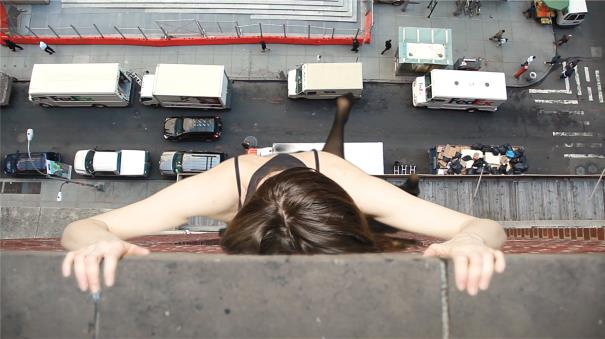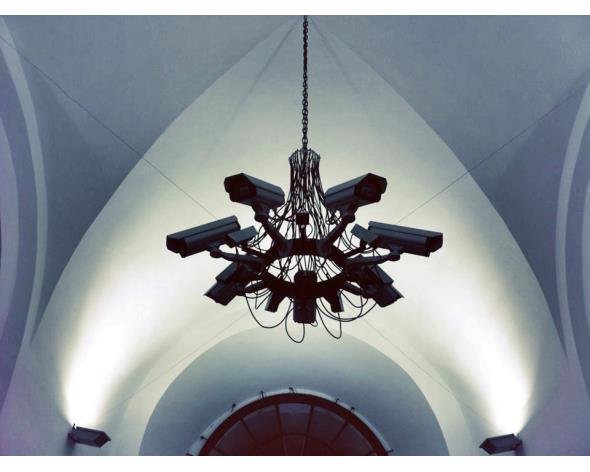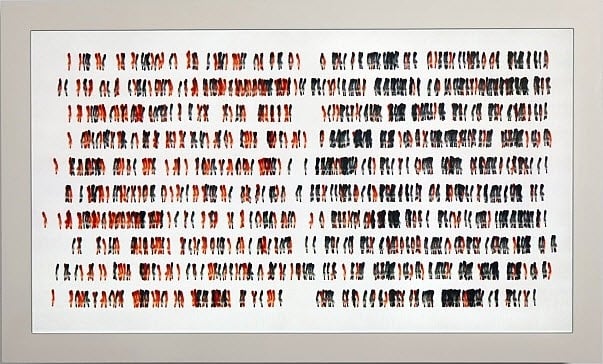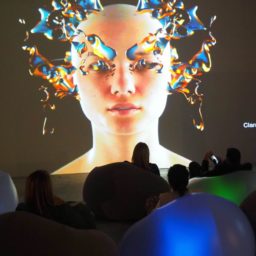

In a recent New York Times article, writer Scott Reyburn asks: “Is digital art the next big thing in the contemporary art world?”
That depends, in part, by what is meant by “digital” art. Of course many artists, Wade Guyton and Christopher Wool among them, have already made a trend of work that is, at some stage, digitally produced. Galleries everywhere are full of paintings, prints, and photos generated digitally and then printed. The distinction here is art that is not only digitally produced but also digitally displayed, very often on-screen. And while the market for such “on-screen” work is still small, the gap between digital production and digital display seems increasingly smaller.
Last October Phillips auction house (in association with Tumblr) held its inaugural “Paddles ON!” sale in New York, consisting of 20 digital works. The auction had a sell-through rate of 80 percent. The highest amount paid for a single work was $16,000, for a chandelier constructed out of CCTV cameras by American artist Addie Wagenknecht, Asymmetric Love Number 2 (2013).
This year’s sale, which began June 21 and continues through July 3, combines an online auction via Paddle8 with a live sale at Phillips. Among the 22 featured works are digital abstracts from Amsterdam-based artist Jonas Lund, photomontages by American artist Sara Ludy, and sight and sound installations from Hannah Perry, perhaps the show’s most purely digital works, displayed on flat-screen video monitors. All of these works are estimated under $17,000 (£10,000) and most are priced far lower at about $3,400 (£2,000).
Jeff Elrod is in many ways a perfect example of an artist born of the digital age, although his techniques to some extent turn the digital paradigm on its head. He began printing computer-generated doodles, made with an old school digital drawing program, while he was a night-shift technician at the Houston Chronicle. Elrod still draws his images digitally, which he then projects onto canvas, then traces with brushes or cans of spray paint. The results are large-scale abstract paintings, which reveal their origins on a computer screen. In March and April of this year, an Elrod show, “Rabbit Ears” sold out at the Luhring Augustine Gallery, and there is currently a waiting list for his digitally-derived abstract canvases. Prices range from $50,000 to $100,000.

Addie Wagenknecht, Asymmetric Love Number 2 (2013). Sold at Phillips auction house for $16,000 in 2014.
Photo: Courtesy of Phillips.
Artists like Cory Arcangel see a clear trend from digital production, like Elrod’s, to digital display itself. Arcangel traces the trend back—perhaps not surprisingly—to Andy Warhol and, in particular, to images Warhol made on a Commodore Amiga home computer in the mid-1980s. The images have a familiar, by now nearly traditional iconography, ranging from soup cans to self-portraits to images of Marilyn Monroe.
What intrigues Arcangel, though, is not their familiarity, but the way in which Warhol seems to have anticipated the full digitalization of art. Arcangel argues that Warhol foresaw an increasingly digitized world and that these rediscovered works from one of Pop art’s greatest printmakers already suggest an inevitable movement toward digital display.
We couldn’t agree more, which is one reason we love collecting Michal Rovner’s 2011 video installation Most.

Michal Rovner Most (2011) (ed. 2/3) video/film, framed plasma screen and video.
Photo: Courtesy of Ivorypress Gallery
Rovner, who was born in Israel in 1957, works in video, sculpture, drawing, sound, and installation. She has had more than 60 solo exhibitions, including a mid-career retrospective at the Whitney Museum of Art.
In many of her works, the installation pieces in particular, history and memory intersect with contemporary politics, science, and archaeology. Most (2011) takes its inspiration from Nobel Prize–winner Wislawa Szymborska’s poem “Microcosmos,” a poem that vividly evokes the fascinations of the microscope, where biology and technology meet under the human gaze. In the video, chromosome-like figures move in pairs, split, and shift, like small creatures playing a game of hopscotch.
The work, which suggests the karyotype of some hyper-advanced species, raises questions of identity, inheritance—even the fraught, ongoing history of eugenics, and, above all, the modern collision of evolving life with evolving technology. In this respect, its digitalization lies literally in the tradition of “expressing the material,” giving the piece a powerful sense of inevitability, arising from intellectual and aesthetic coherence.
It is also stunningly beautiful, a nearly archetypal representative of art’s digital future. This is why we love collecting Michal Rovner’s Most.
[Artwork featured is Maja Cule’s The Horizon (2013) HD Video loop, Blu-Ray disc 3’17” which will be offered at Phillips’s upcoming Paddles On! sale in London on July 3 with an estimate of $1,700 to $3,400]
Astrid T. Hill is the president of Monticule Art, which provides art advisory services to private collectors. She specializes in primary and secondary market works of contemporary art.






